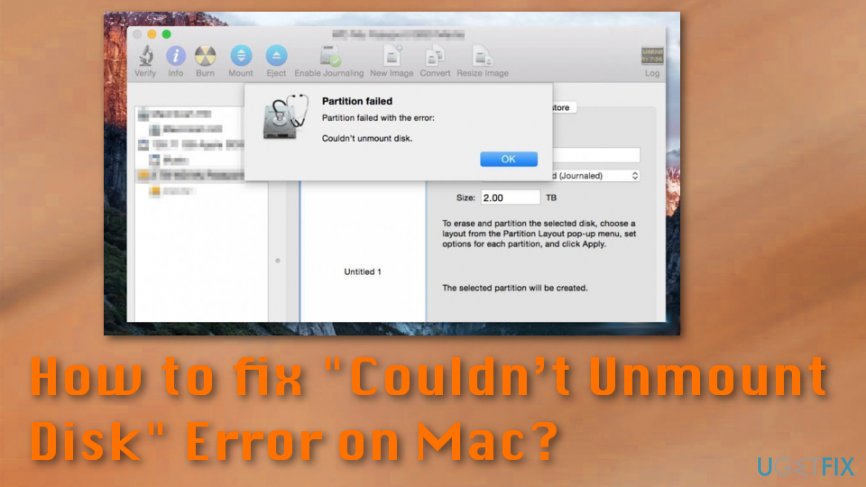

- #MAC MINI UPGRADE TO HIGH SIERRA UNMOUNT VOLUME FOR REPAIR HOW TO#
- #MAC MINI UPGRADE TO HIGH SIERRA UNMOUNT VOLUME FOR REPAIR FOR MAC#
- #MAC MINI UPGRADE TO HIGH SIERRA UNMOUNT VOLUME FOR REPAIR FULL#
- #MAC MINI UPGRADE TO HIGH SIERRA UNMOUNT VOLUME FOR REPAIR FREE#
Unlike erasing an APFS volume, when you right-click the APFS partition or container via Disk Utility, you don’t get an option to delete. Hit the “ Delete” option when re-prompted “Delete APFS volume”.ĭelete an APFS Container/Partition on Macintosh HD.Right-click on APFS volume and select “ Delete APFS volume”.Head to Application> Utilities > Disk Utility and pinpoint the APFS volume that you wish to delete.Invoke Disk Utility to delete an APFS volume. You can remove APFS volume with simple steps for Macintosh HD and an external drive. This section will share the ways that have been proven effective by some Mac users.
#MAC MINI UPGRADE TO HIGH SIERRA UNMOUNT VOLUME FOR REPAIR HOW TO#
How to Delete Other Volumes in Container on Mac? This should shrink the space in other volumes. To reduce the space of ‘other volumes in container on Mac’, you can use PowerMyMac's Duplicate Finder, Similar Image Finder, Large&Old Files to delete the unnessary files.

#MAC MINI UPGRADE TO HIGH SIERRA UNMOUNT VOLUME FOR REPAIR FULL#
It scans the bowels of your system to wipe away junk to fix other volumes in a container gobbling up excess space or delete apps to avoid full applications memory issues. It hives off space on your startup disk occupied by redundant files when your Mac falls short of storage.

PowerMyMac represents the cream of space-freeing tools for general maintenance. PowerMyMac should help you a lot in this situation. This way, you can shrink the space eaten up by other volumes. The only solution is to rein in other volumes in the container and prevent it from expanding.
#MAC MINI UPGRADE TO HIGH SIERRA UNMOUNT VOLUME FOR REPAIR FOR MAC#
Removal of other volumes in a container is hard to complete as these pieces of data are essential for Mac to run. The riddles of APFS partition, APFS container and APFS volume stem from this issue. Can I Delete Other Volumes in Container on Mac?ĭeleting an APFS volume differs from an APFS partition.
#MAC MINI UPGRADE TO HIGH SIERRA UNMOUNT VOLUME FOR REPAIR FREE#
At this point, you may be considering on how you can remove them from Mac to free up storage.

It’s an eye-catching message as these volumes depict they eat up hundreds of gigabytes in aggregate hard drive space and the size balloons gradually. Most users encounter the “Other Volumes in Container” prompt in Disk Utility. In the advent of macOS 10.13, Apple unveiled APFS out-crowding HFS+ in every Mac computer, iPad, and iPhone. Accordingly, “ other volumes in a container” refers to these components of APFS: Preboot, VM, Recovery. Entry-level startup APFS containers integrate Preboot, VM(Virtual Machine), Recovery, and Macintosh HD. The volumes depict actual drives accessible via Finder but you can only see containers in Disk Utility. A physical drive is divisible into different containers. Each APFS container holds one or more volumes. What does ‘Other Volumes in Container’ mean? In APFS parlance, a container refers to the basic storage unit. What Is Other Volumes in Container on Mac? How to Delete Other Volumes in Container on Mac? Part 3. What Is Other Volumes in Container on Mac? Part 2. This article feeds into the quest for hacks about other volumes in container, APFS partition and how to manage your file system.Īrticle Guide Part 1. Users stumble upon “ Other volumes in container on Mac” when it gobbles up hundreds of gigabytes, often slowing down Mac. You will see an “Other Volume in Container” in the Storage area and “Other Volume” set nestled in Disk Utility.ĪPFS introduced a novel file system with a set of new principles for formatting or managing drives. When you upgrade a Mac to macOS 10.13 High Sierra, 10.14 Mojave, or 10.15 Catalina, the system drive converts to HFS+ to APFS automatically. Apple File System (APFS) is a newly-created file storage system with a slew of features and benefits for users.


 0 kommentar(er)
0 kommentar(er)
